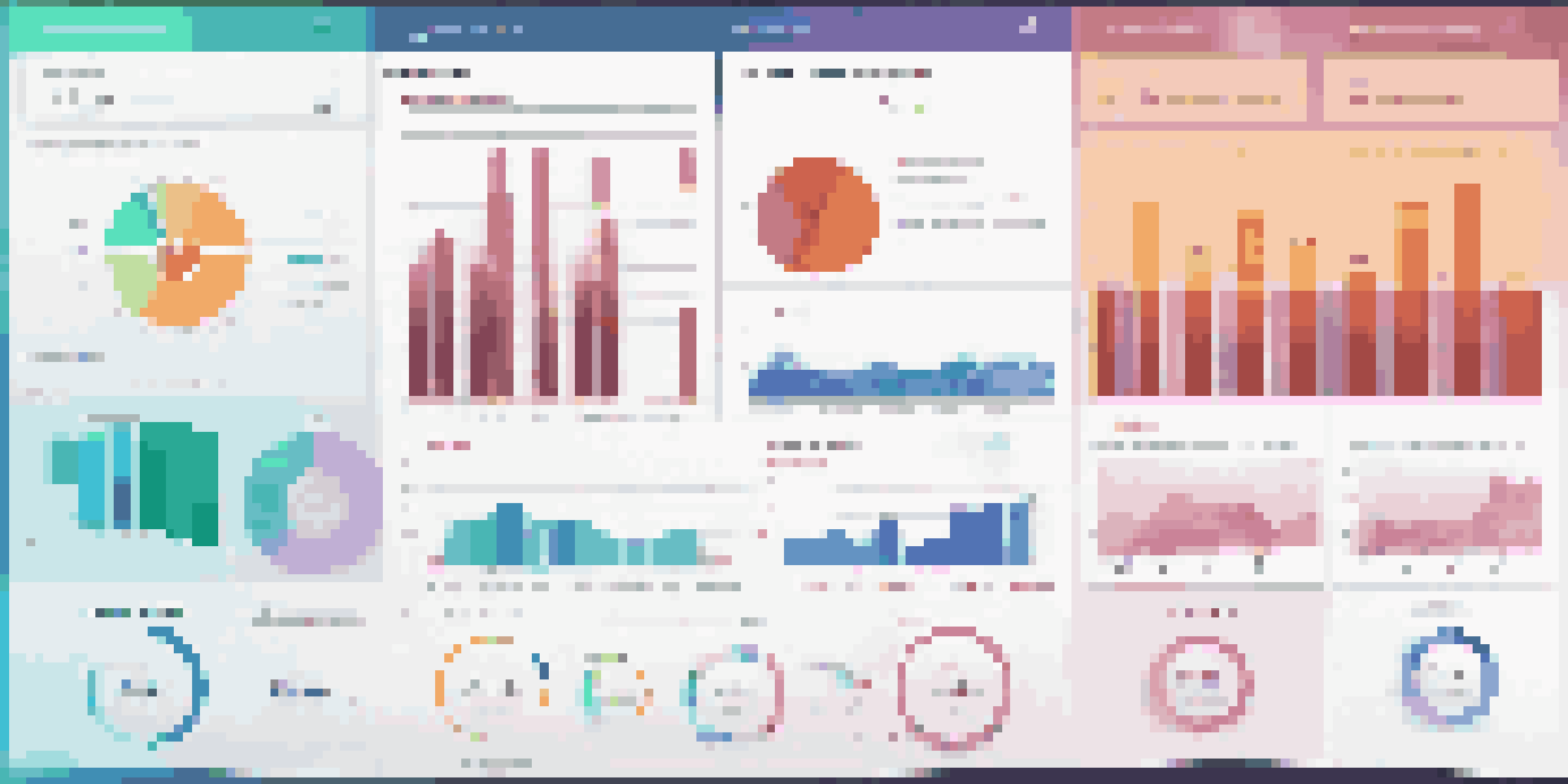Understanding Data Visualization Metrics for Better Results

Why Data Visualization Metrics Matter for Insights
Data visualization metrics are crucial as they help us interpret complex data effectively. Without these metrics, we might get lost in a sea of numbers, struggling to find meaningful patterns or trends. Imagine trying to navigate through a dense fog without a map—metrics serve as our guiding light.
Data visualization is not just about getting the data right; it's about getting the right data to the right people at the right time.
By focusing on the right metrics, we can tailor our visualizations to highlight what's most important. This not only aids in decision-making but also enhances communication with stakeholders, ensuring everyone is on the same page. It's like having a translator when discussing intricate concepts.
Ultimately, understanding these metrics allows us to create visuals that resonate. Instead of overwhelming viewers with information, we can simplify and clarify, leading to better engagement and retention of insights.
Key Metrics to Measure in Data Visualization
There are several key metrics that play a pivotal role in data visualization, including accuracy, clarity, and engagement. Accuracy ensures that the data represented is truthful and reliable, while clarity focuses on how easily viewers can understand the information presented. Engagement, on the other hand, measures how well the visualization captures and maintains attention.

For instance, consider a dashboard displaying sales data. If the representation is accurate but cluttered, users might miss essential insights. Instead, a clear and engaging design helps stakeholders quickly grasp performance trends, leading to informed decisions.
Importance of Data Visualization Metrics
Data visualization metrics help us interpret complex data effectively, guiding decision-making and communication.
By prioritizing these metrics, we can enhance the effectiveness of our visualizations. Think of it as tuning a musical instrument; when each metric is in harmony, the final output is more impactful and resonates with the audience.
Choosing the Right Type of Visualization
Selecting the appropriate visualization type is critical for conveying your message effectively. Different types, like bar charts, line graphs, or pie charts, serve distinct purposes and can emphasize different insights. Choosing the wrong type can mislead viewers, much like using a hammer when you really need a screwdriver.
The greatest value of a picture is when it forces us to notice what we never expected to see.
For example, bar charts are great for comparing categories, while line graphs excel at showing trends over time. Understanding the strengths and weaknesses of each visualization type allows you to present your data in the most impactful way.
By aligning your visualization choice with the data's story, you ensure that your audience can easily digest the information. It's all about creating a seamless experience that guides them through the data narrative without confusion.
The Importance of User-Centric Design
User-centric design is a fundamental principle in creating effective data visualizations. This approach focuses on understanding the needs and preferences of the audience, ensuring that the visualization resonates with them. Think of it as creating a custom outfit tailored to fit the wearer perfectly.
By considering factors like the audience's expertise, preferences, and goals, you can design visualizations that speak directly to them. For instance, a technical audience may appreciate intricate details, while a general audience might prefer straightforward visuals that highlight key takeaways.
Choosing the Right Visualization Type
Selecting the appropriate visualization type is crucial for accurately conveying your data’s message and insights.
Incorporating user feedback during the design process can significantly enhance the effectiveness of your visualizations. It's akin to inviting friends to help you choose a movie; their input can lead to a more enjoyable experience for everyone involved.
Measuring Success: KPIs for Data Visualization
Key Performance Indicators (KPIs) are essential for evaluating the success of your data visualizations. These metrics help quantify the effectiveness of your visuals in achieving specific goals, such as increasing engagement or improving decision-making. Imagine KPIs as the scorecard that tells you how well your game plan is working.
Common KPIs include user engagement rates, time spent on visualizations, and the number of insights gained. By tracking these metrics, you can identify areas for improvement and refine your approach, much like a coach analyzing game footage to enhance performance.
Ultimately, measuring success through KPIs empowers you to make data-driven decisions about your visualizations. This ongoing process of evaluation and refinement ensures that your visuals continually evolve to meet audience needs.
Tools and Technologies for Data Visualization Metrics
Today, a variety of tools and technologies can help you measure and enhance your data visualization metrics. Software like Tableau, Power BI, or Google Data Studio offers built-in analytics features that allow users to track engagement and effectiveness. It's like having a toolbox filled with gadgets, each designed to simplify a specific task.
These tools often provide user-friendly interfaces that allow you to create stunning visuals without needing extensive coding skills. They also come with templates and predefined metrics, making it easy to get started on your data visualization journey.
User-Centric Design Enhances Engagement
A user-centric design approach ensures visualizations resonate with the audience by catering to their needs and preferences.
By leveraging these technologies, you can focus on telling your data story rather than getting bogged down in technical details. This not only boosts productivity but also enhances the quality of your visualizations.
Future Trends in Data Visualization Metrics
As technology evolves, so do the trends in data visualization metrics. One emerging trend is the integration of artificial intelligence (AI) to enhance data analysis and visualization. Imagine having a personal assistant that not only organizes your data but also suggests the best ways to visualize it based on viewer preferences.
Another trend is the growing emphasis on interactivity, allowing users to engage with the data more dynamically. This shift transforms static charts into engaging experiences, where viewers can explore the data themselves. It's like turning a book into an interactive story where the reader controls the narrative.

Staying abreast of these trends will be vital for anyone looking to improve their data visualizations. By embracing new technologies and methodologies, we can continue to create impactful visuals that drive insights and foster understanding.